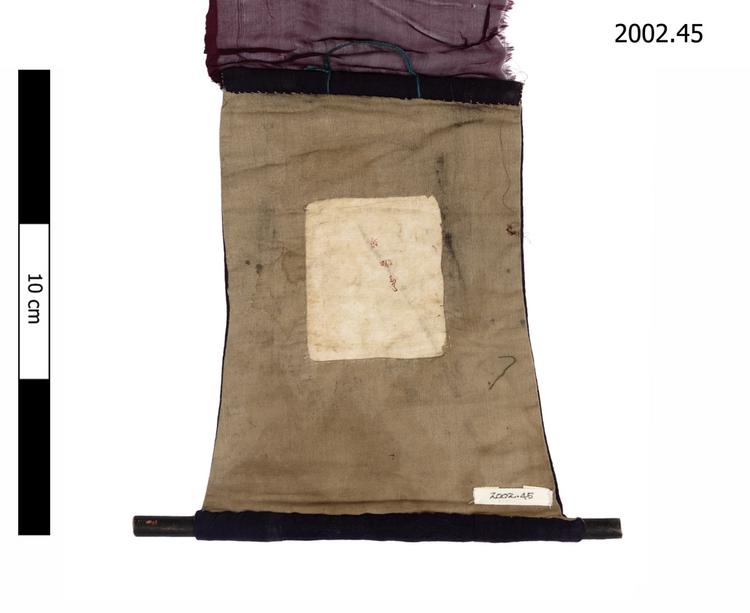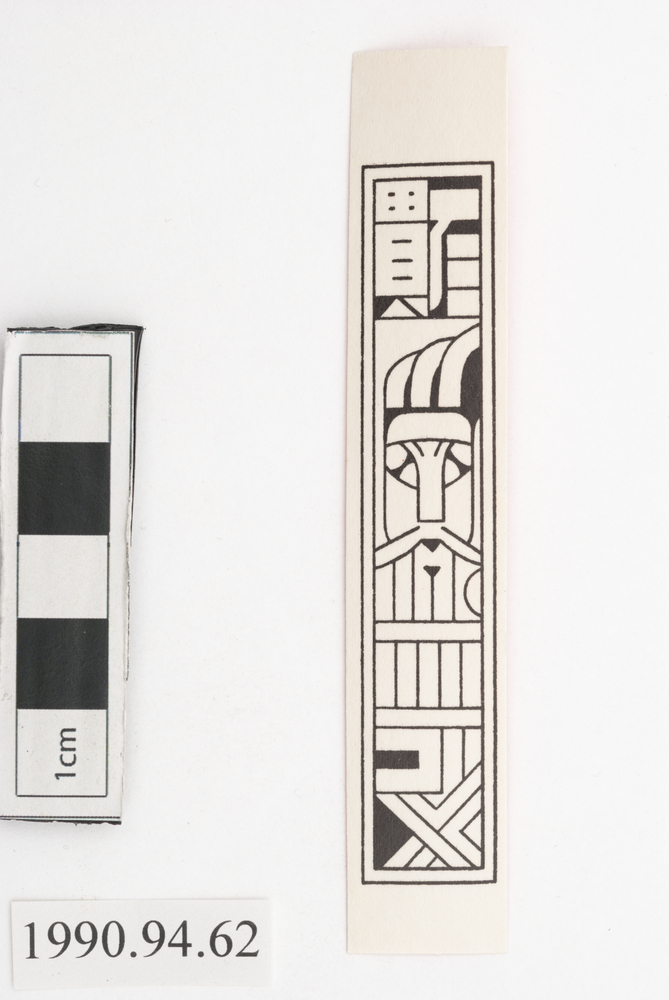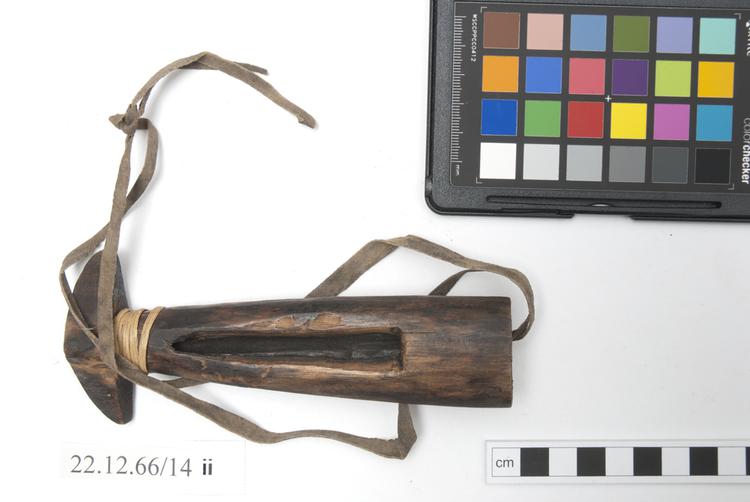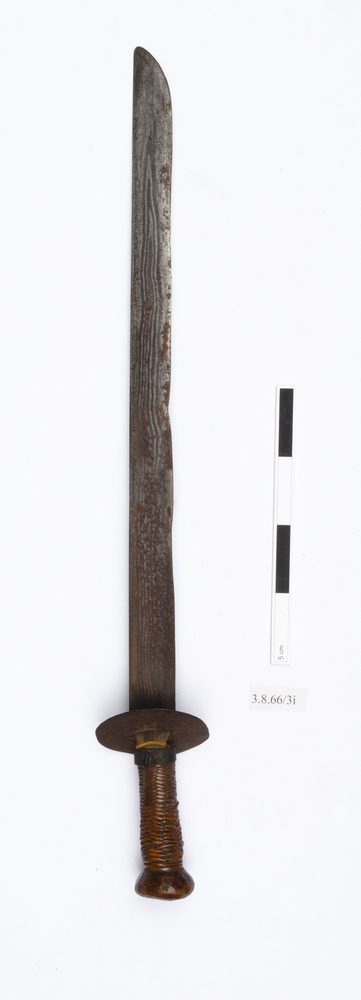
A domestic thangka consisting of a deep purple fabric, with a painted image sewn into the centre and bordered with cream coloured ribbon. There is a string handle at the top and a pole is threaded through the bottom to weigh it down. A second piece of sheer purple fabric is sewn to the top edge, covering the image unless lifted.
The image itself depicts a large red figure, probably Shinje, wearing a crown adorned with skulls, holding a sword in his right hand and surrounded by fire. Beneath him are small human figures and animals as well as heads crying tears of blood.
For a thangka to be effective it first must be consecrated. Typically this involves inscribing the reverse of the painting with the mantra OM AH HUNG, or Body, Speech, Mind. These syllables are written on the thangka by a Rinpoche -a reincarnated Buddha, returned to help others reach enlightenment- or a high lama. The location of the syllables corresponds to the deity depicted on the thangka: body is marked on the other side of the canvas to the forehead, speech, the throat and mind, the heart. Through this process of consecration (or rapney in Tibetan) the image on the thangka becomes the deity it depicts.


































































































































































































































































































































































































































































































































